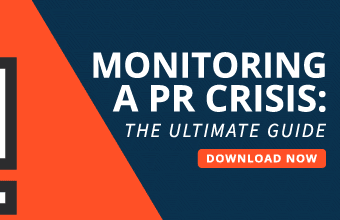Some businesses and workforces have had a smoother transition to today’s shelter-at-home reality than others, but overall, new research from the Institute for Public Relations and comms giant Peppercomm suggests most employees are putting their best foot forward by engaging and collaborating with their companies, even if they’re not being as productive as usual.
More than half of communication executives said employee engagement (63 percent) and collaboration (58 percent) have increased at their companies since the start of COVID-19, according to the just-released SPECIAL REPORT: How Companies Are Engaging Employees During COVID-19. Respondents reported employee trust (49 percent) and satisfaction (32 percent) increased as well. However, 40 percent of leaders said productivity declined while just 25 percent said it increased.
The global survey of communication execs and senior leaders sought to determine how the COVID-19 pandemic has impacted the workforce including employee satisfaction and productivity; the most trusted go-to sources, topics, and channels; how diversity, equity, and inclusion initiatives have changed; and, how companies are preparing for employees’ return to work.
Overall, communication executives reported their function is a critical component of their company’s internal crisis response, with only 5 percent reporting being uninvolved. In addition, nine out of 10 comms execs said their company’s leadership has handled the COVID-19 crisis effectively.
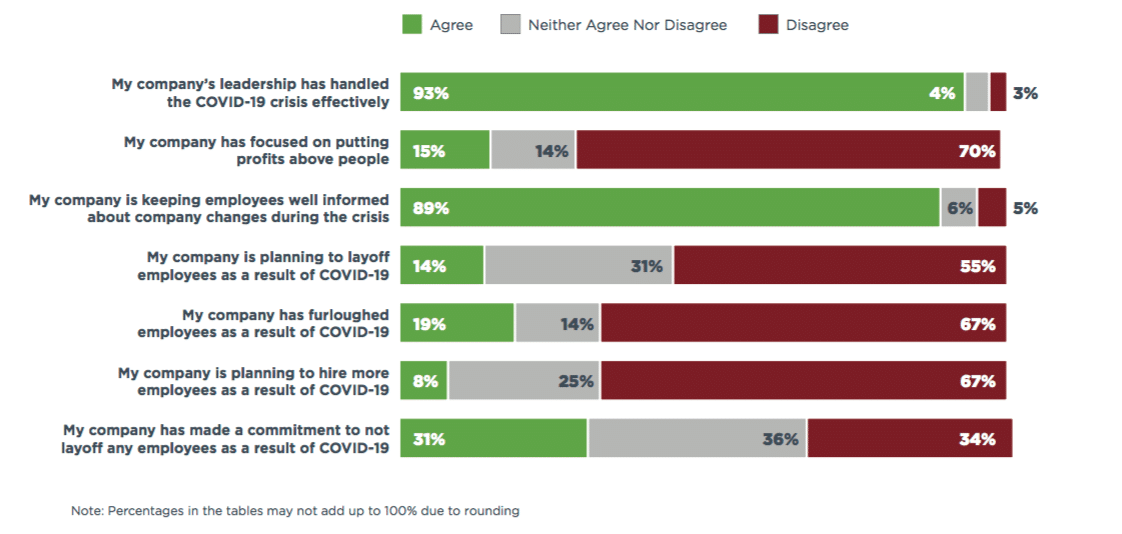
“With lives at stake, companies had to ramp up their communication efforts significantly and quickly, including being flexible and introducing new tools at a rapid rate for a wide range of employees,” said Tina McCorkindale, Ph.D., president and CEO of the Institute for Public Relations, in a news release. “Companies also appear to be more empathetic toward workers who are stressed, many of whom are living in highly uncertain times while juggling multiple responsibilities.”
More than half of communication executives said their company is not planning to layoff (55 percent) or has not furloughed (67 percent) employees, but only 31 percent have made a commitment not to do so in the future.
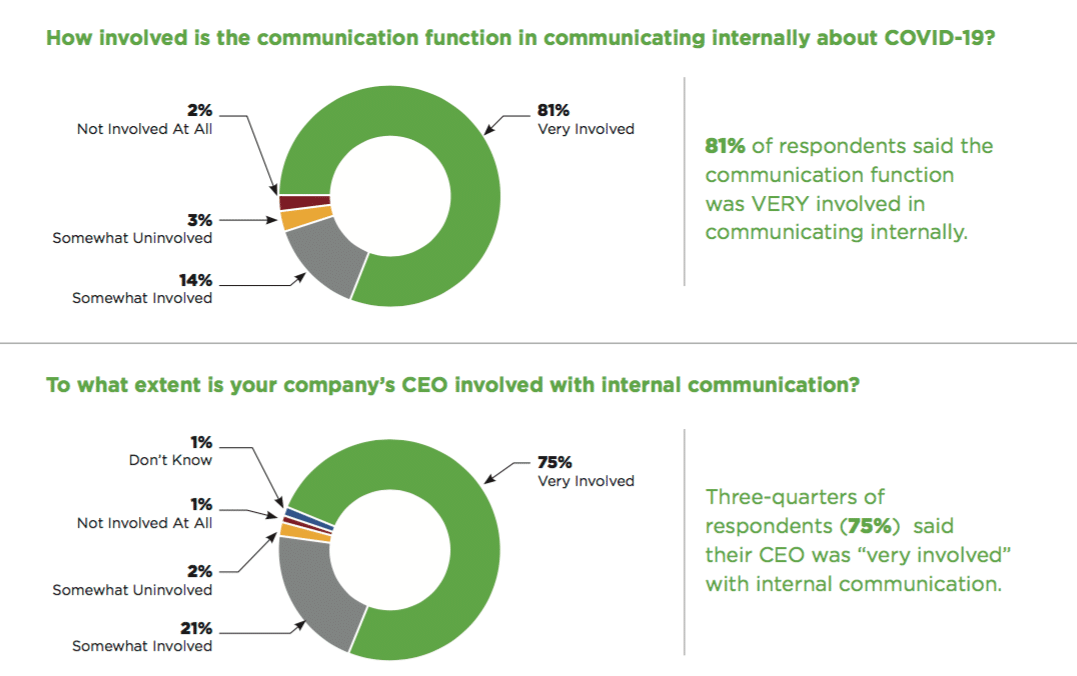
Diversity, equity, and inclusion (DE&I)
Diversity, equity, and inclusion was not a top priority for some communication executives. Only 19 percent of companies are communicating information focused on DE&I to their employees.
Some leaders discussed the importance of remaining committed to DE&I, including continuing their efforts with the same investment and resources. Some executives acknowledged that COVID-19 disproportionately impacts minorities, so they are communicating differently to these audiences, including some taking a stand against racism, specifically with Asian-American communities in the U.S. Others said their DE&I efforts were falling behind, they were pausing their efforts, or it was not a focus or important right now.
Work-from-home (WFH) efforts
On average, respondents reported 13 percent of their company’s employees worked from home before COVID-19, compared to 77 percent during COVID-19, and an estimated 23 percent following COVID-19.
Some leaders noted before the pandemic their companies discouraged WFH and had to quickly change to primarily virtual—a significant shift for them. Some had to issue rush orders for laptops and migrate to internal collaboration tools.
Return to work
Return-to-work preparations were in the early stages as only 10 percent of communication executives had done extensive planning. Sixty percent of respondents had not started planning for the return or did not know about return-to-work preparations for their employees. Only 42 percent of respondents have done at least “some” planning. One-quarter (27 percent) said they are planning for a phased or gradual return of their employees, while 12 percent said they will return all at once.
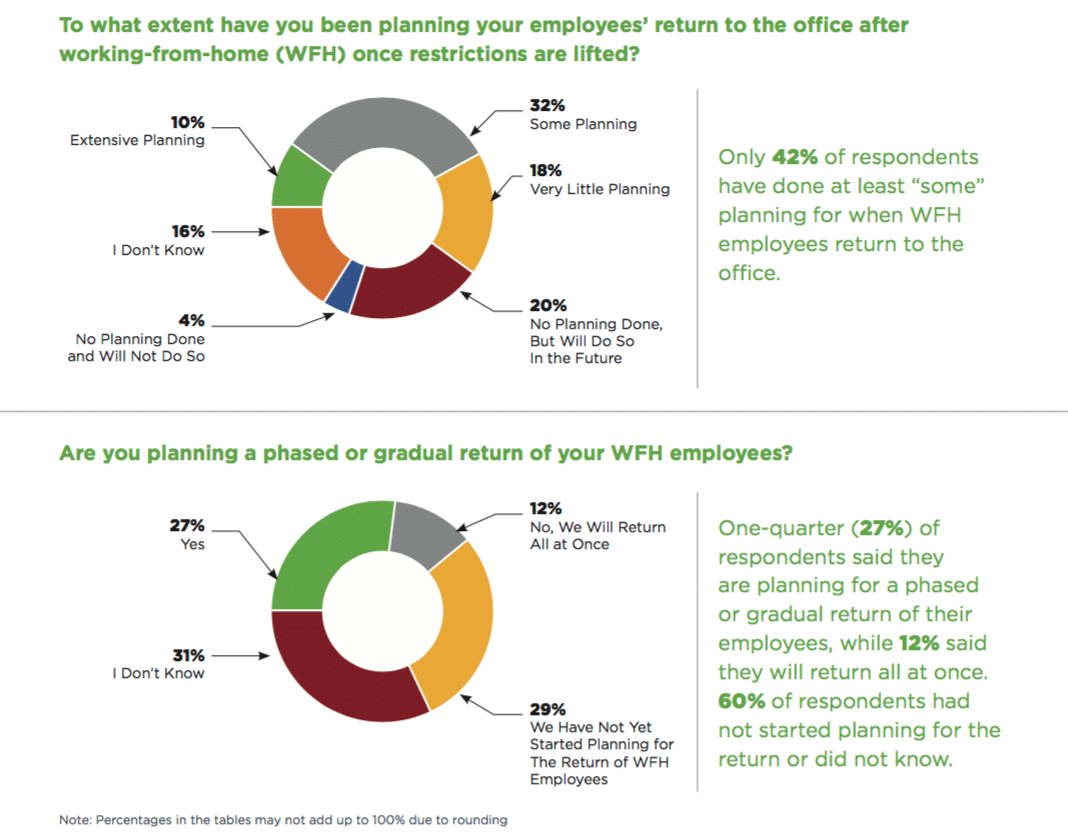
Nearly three-quarters (74 percent) of respondents had not discussed any changes to the physical work environment or were unsure if their organization was going to make any changes. Some noted changes include increasing physical distancing of employees (closing shared spaces, creating physical barriers, adding plexiglass shields, and more contact-less meetings), increasing shared space such as eliminating desk ownership, instituting temperature checks, offering more WFH opportunities, and banning handshakes.
“One of the other remarkable findings was the near universal lack of preparedness to return to work on the part of senior communicators,” said Steve Cody, founder and CEO of Peppercomm, in the release. “I understand we are dealing with one unexpected crisis after another, but if CCOs and agency leaders alike don’t begin to look up and look ahead NOW for how best to manage their direct reports when they return, they will find major gaps in quality, service and productivity. This is especially problematic for organizations whose teams will return to work on a staggered basis.”
Focus on mental, physical, and emotional health
Two-thirds of communication leaders said they were sending their employees information about their physical (70 percent) and mental (65 percent) health. One company instituted a staff-morale committee. Virtual happy hours, wellness programs, mindfulness apps and resources, and even digital hubs with interest/support groups were all mentioned. Companies offered programs to help decrease loneliness and anxiety as well as resources to help working parents.
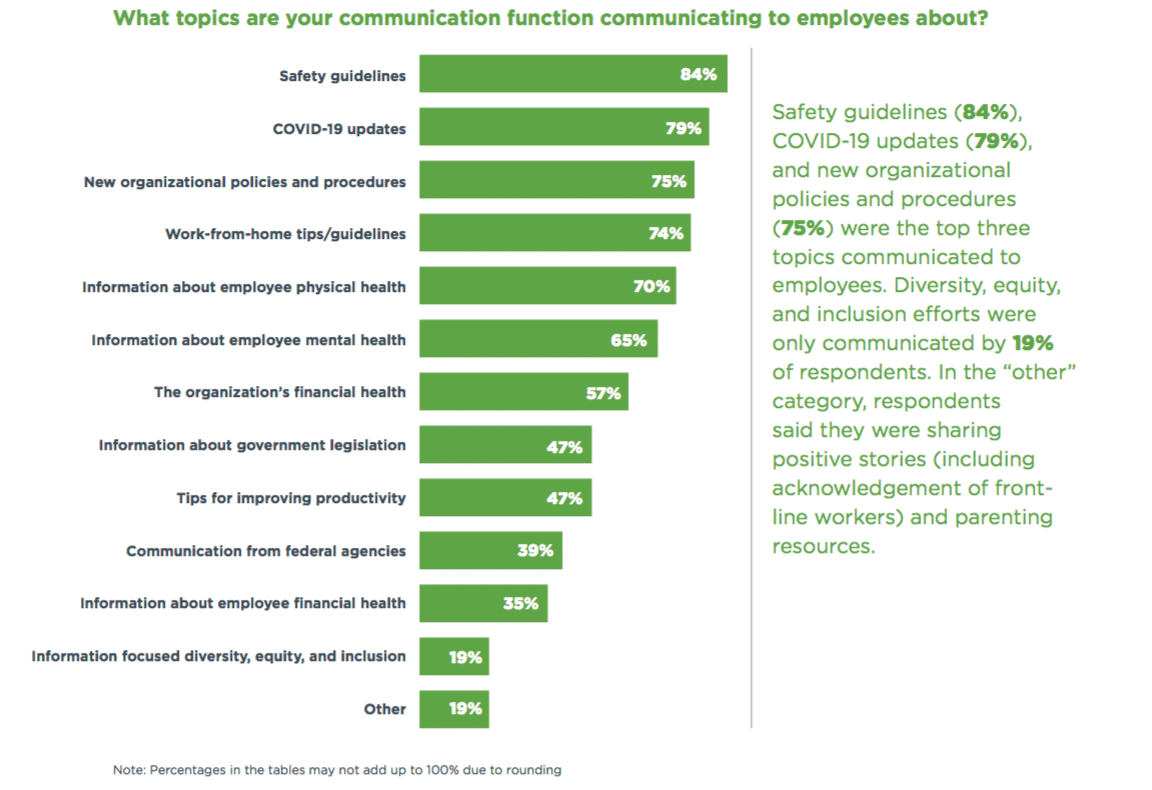
Most companies are helping external stakeholders affected by COVID-19; 61 percent engaged employees directly in these initiatives.
How leaders are communicating
Communication executives suggested consistent key messages across functions, and frequently communicating with employees from a consistent source was critical in their efforts.
Three-quarters of respondents said the CEO was “very involved” with internal communication. Personal touchpoints were favored to be the best channels for communicating with employees. Nearly all respondents used emails (99 percent) and supervisors/managers (91 percent) to communicate internally. One-on- one check-ins (85 percent) were also frequently used. Direct communication through supervisors/managers (61 percent) and one-on-one check-ins (76 percent) were noted to be “very effective” channels.
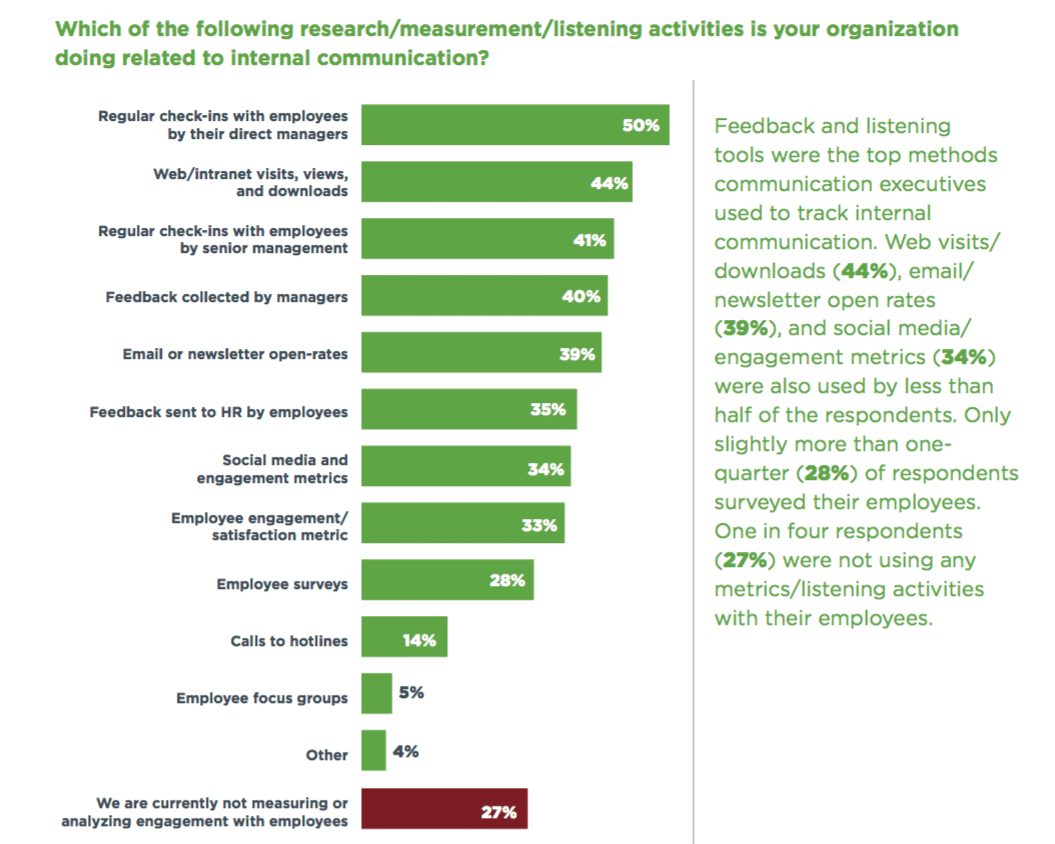
Regarding the sources where communication leaders were referring their stakeholders to for more information, the top three were internal executives (69 percent), federal agencies (66 percent), and internal media platforms/sources (64 percent). Country leaders (13 percent) and unaffiliated medical practices (2 percent) were recommended the least.
The top methods communication executives used to track results in their internal communication or to seek employee feedback were informal listening tools and methods (e.g., check-ins, web visits, email open-rates, HR feedback). Nearly one-in-four were not tracking at all and only one-fourth (28 percent) surveyed their employees.
Download the full report here.
The Institute for Public Relations and Peppercomm conducted a global online survey of 403 communication executives and senior leaders from April 6 -12, 2020, to determine how companies are communicating with and engaging their workforce during the COVID-19 pandemic. The margin of error based on the sample size is +/- 5%, but please note this is not a random sample.







